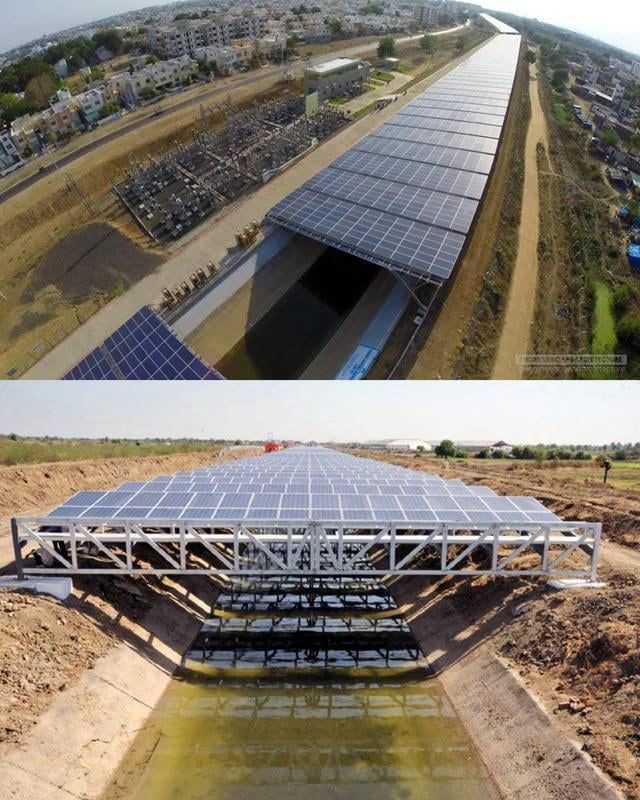The integration of solar panels into canals offers several advantages. Here are a few key benefits:
1. Land and Water Conservation: By utilizing the surface area of canals for solar panel installation, floating solar systems can help conserve land, which is often limited and valuable. Additionally, the panels can help reduce water evaporation from the canals, thus conserving water resources.
2. Increased Efficiency: Solar panels installed on water can benefit from the cooling effect of the water, which helps to improve their overall efficiency. As solar panels become hotter, their efficiency tends to decrease. By being located on canals, the panels can maintain lower operating temperatures, resulting in higher electricity generation.
3. Reduced Environmental Impact: Floating solar panels have a lower environmental impact compared to conventional ground-mounted solar installations. They do not require land clearing or disrupt ecosystems, minimizing soil erosion and habitat disruption. Floating solar can also help reduce algae growth in the canals, improving water quality.
4. Synergy with Hydroelectric Power: Canals are often associated with hydroelectric power generation. Integrating solar panels into canals can complement existing hydroelectric infrastructure, providing additional renewable energy sources without the need for new transmission lines or land acquisition.
5. Enhanced Performance and Maintenance: Integrating solar panels into canals can provide easier access for maintenance and cleaning. Since the panels are closer to the ground, they can be easily serviced without the need for heavy equipment or extensive infrastructure.
Several countries, including India, China, and the Netherlands, have already implemented floating solar projects on canals and reservoirs, demonstrating the feasibility and benefits of this approach.
It's important to note that while integrating solar panels into canals offers advantages, there are also challenges to consider. These include ensuring structural stability, preventing water leakage, and managing the impact on aquatic life and local ecosystems. However, with proper planning and design, these challenges can be addressed effectively.












